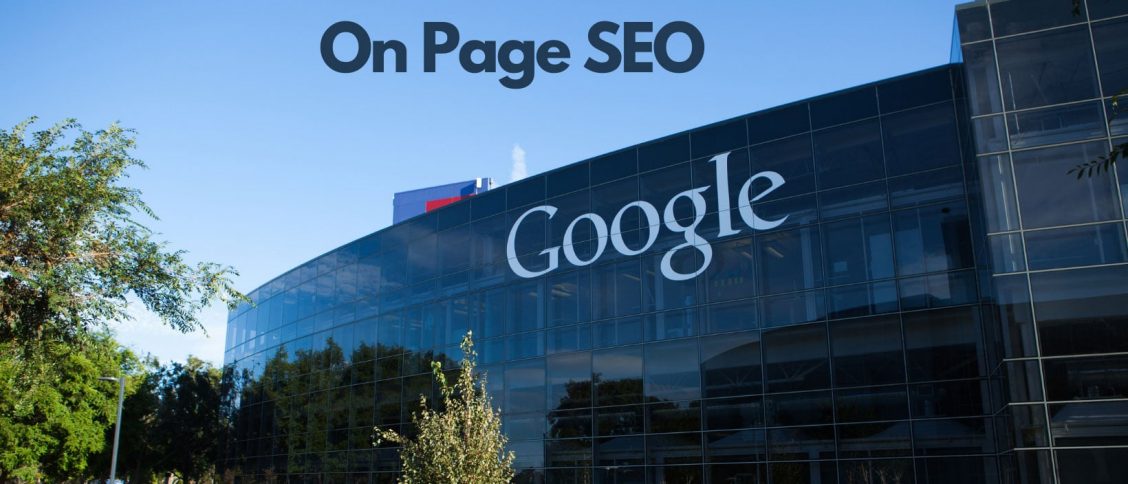On Page SEO ranking factors also plays a major role in today’s rankings in google search engines. I often see SEO professionals ask me, “how to build backlinks?”, Yes, backlinks are also important only to improve rankings. But before building your links, execute perfect On-Page SEO for a complete site, do technical SEO and then work on building links. In this article, I will share On-Page SEO and share useful resources to perform On-page SEO for your blog or website. keep reading
1. Title
The title should be in H1 size only. If you are using WordPress, relax all the blog titles, and page titles in WordPress are H1 only default. If you are using an HTML website, use the H1 tag for the title. Everyone recommends title length of around 60 characters, but Google can crawl up to 100 characters. John Muller said this. Even the YouTube title length limit is 100 characters only. Pinterest Pin title length is 100 characters. What can we understand by this? We can write our page titles up to 100 characters. Use primary keywords in your page titles.
Every page in your website or blog should target to rank for keywords; otherwise, what is the use of keeping that page? Ignore pages like contact us and privacy policy.
2. Description
Meta description gives an additional 160 characters space under the title. The description also should consist of keywords. Try to put keywords naturally in the meta description. Depending on the web page, write the meta description, do not think you have to use complete 160 characters. It can be less than 160 characters or more than 160 characters, also fine.
3. URL
URL (Uniform Resource Locator) is the third component that we see on the search engine results page after title and meta description. URL should consist of keywords. In my experiment, I found that short URLs are performing better than long URLs. Other studies are proved that short URLs are performing well on google. If you are page title is “How to become an SEO specialist,” your URL can be website.com/seo-specialist.
No need to put how to or sometimes how to become words also in the URL. Remember, URL optimization is also important in your site audit. Don’t change old URLs, and it will hurt the backlinks you already built for that URL. Apply this technique to the new URLs. If you still want to use short URLs for old pages, redirect the old URLs to new URLs by redirecting the WordPress plugin.
Don’t over-optimize, don’t under-optimize. Just Optimize
Same like title, URL length should not exceed 100 characters, google won’t crawl after 100 characters in the URL.
4. Keyword Density
Assume that you target the “digital marketing course” keyword, and you kept that keyword in the title, URL, meta description. Google also checks the complete page content by crawling. So, the page should have content related to digital marketing only. Use your content writing skills and put keywords naturally. It should not sound like keyword density which is the oldest method to rank in google. It was working, but not now.
Use LSI (latent semantic Indexing) keywords on the page. LSI keywords are thematic keywords that come when you write on a particular topic. For example, if you are talking about tourist places like Taj Mahal, Charminar, Kanyakumari, and Ooty. Google understands that you are talking about Indian tourism places even though you do not mention that these are Indian tourism places in the content.
5. Image Alt text
Image alt text is a simple tip only, but often we miss it. If you are using any images on the page, put primary keywords as image alternative text. Optimize the dimensions and size of the images as per requirement. Use this tool to check whether the page images consist of alt text or not.
If your WordPress site is old and you find many images without alternative text, use this WordPress plugin to rename the images and put alternative text.
You have image optimization plugins also like smush. Use it. I highly recommend you optimize your images before uploading them into your site by tinypng.com or Photoshop
6. Content-Length
Google tells that content length topic doesn’t exist. I suggest trying to put all the important information related to the page and try to keep it short. TF-IDF is another method to calculate and use keywords in your content.
7. Internal Links
Interlinking is another opportunity to increase user dwell time by providing the most relevant information as per the context. For example: if your page is about “8th class science tuitions”, you can interlink to the “8th class maths tuitions” page.
We often miss interlinking opportunities. I use my on-page SEO template for interlinking the articles and pages. If your site is big, then consider taking interlinking WordPress plugins. It’s worth investing to see a spike in your rankings and traffic. Personally, I am using Link Whisper WordPress plugin for my interlinking works. Links are crucial on page seo ranking factors.
8. Social Sharing icons
I don’t consider putting social icons as an on-page SEO factor. But indirectly, it amplifies the page traffic if the user can share it easily on social media or WhatsApp. Hence, let’s consider adding social sharing icons to our blog.
9. Use Multimedia for On Page SEO
What I observed in Brian Dean’s blog is, he uses multimedia extensively. We can call his blog “Visual Blog” also. You observe any of his articles; you will find many screenshots and content designs, videos, infographics, templates, e-books in his content. Use multimedia wherever you need.
10. Use Outbound Links
Do external linking for your articles. External linking tells Google that you are referring to other sites also to demonstrate your point of view. I use outbound links in articles wherever necessary.
11. H2 and H3
As we learned, all the titles in WordPress are H1 only. Next, our subheadings should have H2. If you have subheadings for H2 tiles also, use the H3 heading.
12. Page Speed: On page seo ranking factors
Page speed we can take into technical SEO. However, speed can make or break your SEO. I recommend you improve your page loading speed. Check your site in google page speed insights tool, gtmetrix, Pingdom, and optimize the site. Improving site speed is too technical. Take web developer help.
13 How to Perform On-Page SEO
Till now, you understood what to do in On-page SEO. Let me share the resource which can help you to do On-Page SEO in a short span. Templates save tons of time in our work. Download the On-Page SEO template from Hubspot and customize according to your on-page SEO needs and use it.
If you need SEO services for your business or SEO training, reach out to me



